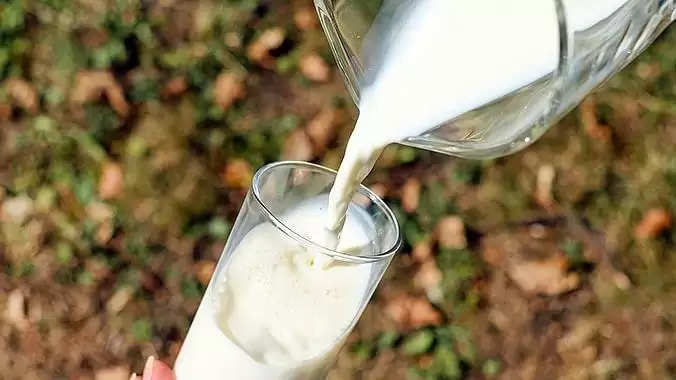Na Ri & Beyond: A look into the Meghalaya Milk Mission

Two years into the ‘Meghalaya Milk Mission’ launched by the Animal Husbandry & Veterinary Department, Government of Meghalaya in 2018, we take a closer look at the Mission that seeks to promote dairying and allied sectors in the state.
With two more years to go, we must question and seek to consider the success or failure of the Mission so far so as to chart out what is left to be done henceforth. This becomes even more important in the wake of the COVID 19 pandemic which has disrupted life– including the economy and livelihoods for many in the state (as it has in the entire world).
In the following paragraphs, we will examine the background of the dairy sector in the state, the objectives and mandate of the Milk Mission and finally, take stock of the progress made so far. This shall be done with a special focus on the mini-case study of ‘Na Ri’, a cooperative of the East Khasi Hills District Cooperative Milk Union Ltd.
Meghalaya’s Dairy Sector & the Milk Mission
As per Meghalaya’s Bovine Breeding Policy 2018– the per capita availability of milk in Meghalaya is 77.00g per person per day only which is far below the national average and the Indian Council of Medical Research recommended requirement of 300g per day per person.
Traditionally, dairy farming in the state has been mainly for meat purposes and the animals are not milked. However, considering changing habits and increased purchasing power of people in the state, it is expected that the demand for milk and milk products will continue to rise. When looking at the dairy sector from a macro-level, the status is behind that of many other states of India. Some of the major constraints include the absence of organised marketing channels in Meghalaya, promotion of milk processing and marketing, etc. However, an analysis done by researchers in 2017 concluded that while the dairy sector in Meghalaya is “characterized on the basis of poor resource endowments”, the viability of milk marketing also presents opportunities in the state. Channels of opportunity are available through – high productivity of crossbred cows and a high price realised from sale by the farmers. Thus, in order to make use of these opportunities, the Government of Meghalaya has been promoting the steady growth of dairying for milk in Meghalaya.
In view of the fact that most dairy farmers in the state are “first-generation farmers”, the Meghalaya Milk Mission was launched for the years 2018-2022. This is a dedicated mission of the government of Meghalaya which seeks to integrate the Anand Model (AMUL Model) from Gujarat and the community approach.
The primary objectives – increase milk production, encourage farmers in the development of Community farming based Dairy Co-operative Societies and the development of community ranches. For this, the overall strategy includes capacity building, monitoring and evaluation, with the objective of achieving genetic up-gradation of indigenous breeds of cattle.
Fig. 1. shows that key project components under the mission for which the total project cost is Rs. 21,548.27 lakh. The Meghalaya Dairy Development Agency was also formed as the nodal institution for the Milk Mission to promote all-round development of the Dairy Sector in Meghalaya.
The case of Na Ri Fresh
Established in 2009 under Section II of the Meghalaya Cooperative Societies Act (Assam Act I of 1950 as adapted by Meghalaya) with its area of operation within East Khasi Hills District is a milk co-operative modelled after the Anand Model (AMUL Model). The main role of Na Ri is to “to look into the welfare of the Dairy Farmers by making Dairying a sustainable source of income”. Further, the union also procures excess milk to process and market milk and milk products, thereby, preventing the dairy farmers from being exploited by the middlemen. In keeping up with the Mission, the Meghalaya Milk Processing Centre situated at Central Dairy, Mawiong (from where the Na Ri Fresh products are produced) was upgraded from 10,000 litres per day chilling capacity to 40,000 litres per day under the NPDD scheme being implemented by the Shillong Milk Union in Meghalaya. With the increased capacity of the Na Ri Fresh facility, the co-operative has also engaged in-home delivery services, catering to the main parts of Shillong City in partnership with the Tynrai Multipurpose Cooperative Society Ltd.
ALSO READ:
Also Read: Northeast gets its first human milk bank
At present, 36 Dairy Co-operative Societies have been organised and functioning within the East Khasi Hills and Ri Bhoi District. It is also proposed to organise 30 Dairy Co-operative Societies in Jaintia Hills District and 31 Dairy Co-operative Societies in Garo Hills Districts. The process of organising new Dairy Co-operative Societies are in progress. The mini-case study of Na Ri Fresh has shown considerable improvement in dairying.
Thus, one could say that the Meghalaya Milk Mission goes to show that technological specialisations have given a huge boost to the industry in the state. Adding to the momentum of the mission, the annual National Milk Day (NMD) has been held with various programmes ranging from drawing competition, essay competition and Shillong Milk Marathon since 2018.
However, it is also important to note that considering the vast potential of the sector in the state, dairy development still has a way to go. There are two years left to go for the Mission and the mandate of the Milk Mission still needs to be fulfilled. This will be crucial to Meghalaya’s rural economy in the short term as well as long term.
(Bethamehi is currently pursuing her Master's in Public Policy at the National Law School of India. Her areas of interest include food policy, social impact, indigenous communities and governance. She is also currently associated with the Dellimai Warnongbri Foundation as a Research Analyst.)
ALSO WATCH:

















